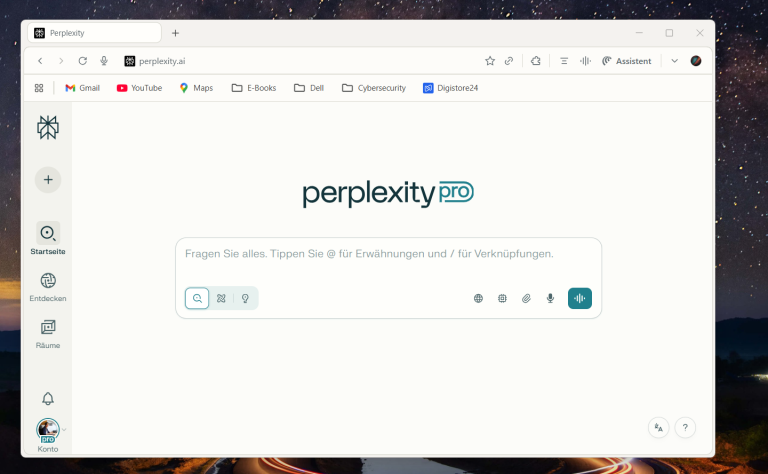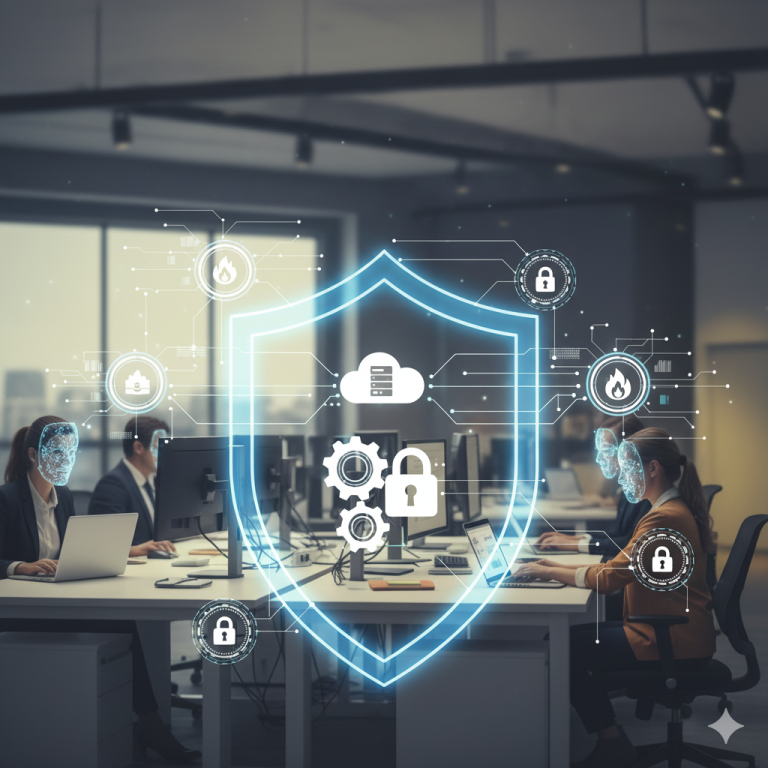For many companies, “turn on the VPN” has long meant “we are safe.” But in 2025, with remote work, cloud systems, and smarter cyberattacks, this idea is no longer true.
A Virtual Private Network (VPN) still has value. It encrypts data, hides IP addresses, and helps employees connect from home or while traveling. But a VPN can also create a false sense of security. If it is not managed correctly, it can hide weaknesses instead of fixing them and give attackers new ways to enter the network.
The truth is simple: a VPN alone is not a security plan. It is only one piece of a much bigger system that must also include strong identity checks, limited access rights, healthy devices, and constant monitoring.
In this article, you will learn where VPNs still make sense for businesses, where they no longer work well, and how modern access solutions go far beyond a simple tunnel connection.
1. The Business Case for VPNs: Where They Still Work
Even though many experts talk about Zero Trust or SASE, VPNs are still part of everyday business life. They are simple to set up, affordable for most companies, and give remote workers a secure way to connect. When used the right way, a VPN can still offer real value in 2025.
The first and most common reason is to protect employees who work remotely. People connect from cafés, hotels, trains, or their home Wi-Fi, which is often not secure. A company VPN encrypts the data that travels between the employee’s device and the company network. This means that nobody on the same public network can read or change it. For example, a sales team logging in from an airport lounge can safely open the CRM system without exposing customer data. In this case, the VPN’s goal is not to hide who you are, but to make sure your connection stays private and safe.
VPNs are also helpful when a company still uses internal or older systems that are not available in the cloud. Many organizations have local servers or programs that cannot be accessed through a browser. A VPN creates a secure tunnel to reach those systems from outside the office. For example, a manufacturing company that still runs its production software on-premises can allow engineers to log in remotely without opening the system to the public internet. In this way, the VPN acts like a digital bridge during the transition from local IT to modern cloud services.
Another reason many companies keep using VPNs is compliance. Rules such as ISO 27001, HIPAA, or GDPR still ask businesses to protect sensitive data while it is sent over the internet. A properly configured VPN helps meet those rules by encrypting communication and reducing the risk of data leaks. Auditors often check if remote connections are encrypted, so a VPN can be an easy way to show that the company takes data protection seriously.
Finally, VPNs are a good starting point for small and medium-sized companies that have limited budgets. A VPN can give them a basic level of protection without needing an entire security team. For instance, a marketing agency with 20 employees can use a business VPN service like NordLayer or a simple WireGuard setup to secure client files. The most important part is good management: every user must have their own login, multi-factor authentication must be active, and access should be removed when someone leaves the company. Without these steps, even the best VPN quickly becomes a risk.
In short, VPNs still make sense when they are used for the right reasons—protecting remote connections, giving access to internal tools, and meeting compliance needs. But as soon as a company grows, moves more systems to the cloud, or needs fine-grained control over who can see what, the classic VPN starts to reach its limits. That is when it is time to think about more modern solutions like Zero Trust or SASE, which focus not only on encrypting traffic but also on verifying every user and device.
2. The Hidden Risk: A False Sense of Security
The biggest problem with company VPNs is not the software itself, but the way trust works. A traditional VPN assumes that everyone who connects to the network is safe and trustworthy. Once someone is inside the tunnel, they can usually reach a large part of the company’s internal systems. This idea worked years ago when all employees worked in the same office, but in 2025 it is one of the main weaknesses.
If a hacker steals an employee’s VPN password or a laptop becomes infected with malware, the VPN connection can turn into a direct entry point for attackers. From there, they can move through the network, copy sensitive files, or install ransomware. What was meant to protect the company suddenly helps the attacker to reach more systems faster.
Many organizations also make mistakes that increase this risk. For example, they use shared accounts, where several people log in with the same VPN credentials. In this case, it becomes impossible to see who did what. Others have flat networks, which means every user can see too much—such as HR data or development servers they don’t actually need. Some companies forget to segment their network at all, so if one department is hacked, the rest of the business is exposed too. And finally, there are blind spots: once a user is connected, the company often has no idea what happens inside the tunnel.
The main issue is that a VPN protects the connection path, not the person or the device. It does not check if the user is really who they claim to be, if their laptop is up to date, or if suspicious actions happen after login. This is why relying only on a VPN gives a false sense of safety. It feels like strong protection, but in reality, it may hide serious weaknesses.
To stay secure in 2025, businesses need to look beyond the VPN tunnel and focus on identity, device health, and continuous monitoring—because encryption alone is no longer enough.
3. From VPN to Zero Trust: A Necessary Evolution
Over the past few years, many companies have started to move away from the traditional VPN model and toward what is called Zero Trust Network Access, or ZTNA. The name “Zero Trust” describes the main idea: never trust a connection just because it is inside the network. Every user and every device must prove who they are and that they are safe—every single time.
In the old world, once a person connected through the VPN, they could usually move freely across the network. Zero Trust changes this completely. Instead of opening one big door to everything, it gives users access only to the specific applications or data they need. This principle is called least privilege, and it greatly limits the damage that can happen if one account is hacked.
Modern Zero Trust systems also check more than just passwords. They verify the user’s identity, the security state of their device, and the context of the connection—such as where the person is logging in from and what time of day it is. If something looks unusual, access can be blocked or require additional confirmation, like a second authentication factor.
This new model fits perfectly with how businesses work in 2025. Employees use cloud services like Microsoft 365, Google Workspace, or AWS. Many also use their own devices or connect from home. In such a distributed environment, having one central VPN tunnel no longer makes sense. It is too slow, too hard to manage, and too risky if something goes wrong.
Zero Trust is not only about technology—it is about changing how we think about security. Instead of building high walls around the network, companies create smaller, protected areas that constantly verify who enters. This approach improves both visibility and control, while reducing the attack surface dramatically.
In short, the shift from VPN to Zero Trust is not just a trend. It is a natural step toward a more modern and realistic security model—one that matches how businesses operate today. VPNs still have their place, but the future of secure access clearly belongs to solutions that don’t depend on blind trust.
4. How to Decide: Keep, Replace, or Combine
Not every company needs to remove its VPN right away. For many, the better approach is to evaluate how the VPN is used and decide whether to keep it, replace it, or combine it with newer technologies. The right choice depends on your current setup, business size, and security goals.
If your company still runs local or legacy systems, a VPN can still make sense. Some old applications simply cannot work with cloud identity tools or modern access gateways. In such cases, a VPN with strong access rules and multi-factor authentication can protect these systems until a migration plan is ready. The important point is to treat the VPN as a temporary bridge, not a permanent solution.
If your employees mostly use cloud platforms like Microsoft 365, Slack, or AWS, then a traditional VPN adds little benefit. These tools already use encryption and strong identity protection. Instead of routing all traffic through a VPN tunnel, it is often smarter to use Zero Trust Network Access (ZTNA) or a SASE solution. These systems connect users directly to the resources they need, with continuous verification and better visibility for the security team.
For many medium-sized companies, the most realistic option is a hybrid model. You can keep the VPN for internal or older systems and use Zero Trust access for modern cloud apps. Over time, as more systems move to the cloud, the VPN can be phased out. This step-by-step transition avoids big disruptions while improving security at each stage.
When making this decision, it helps to ask a few key questions:
-
Do we really know who is connecting through our VPN and what they can access?
-
Are we using MFA and regular access reviews for all VPN accounts?
-
Can we see what happens after users log in, or are we blind to activity inside the tunnel?
-
Do we have a plan to migrate legacy systems to a safer access method?
If the answer to most of these questions is “no,” then your VPN is likely creating more risk than protection. That’s the moment to start planning your move toward a Zero Trust or SASE environment.
In the end, a VPN can still be useful when managed with discipline and limited scope. But as companies grow and threats evolve, combining or replacing it with modern access solutions gives much better long-term protection.
| Question | If “Yes” | If “No” |
|---|---|---|
| Do you still rely on legacy or on-prem systems? | Keep a VPN (with strict access control) | Move to ZTNA |
| Do all remote users have MFA and device compliance checks? | Combine VPN + identity security | Prioritize Zero Trust rollout |
| Do you lack visibility after login? | Add monitoring and segmentation | Evaluate SASE platform |
| Do you need to scale global access securely? | Transition to SASE/ZTNA | Retain VPN for isolated cases |
A hybrid approach is often ideal: keep VPNs for isolated internal systems while deploying Zero Trust for modern workloads. Over time, phase out the tunnel entirely.
5. Building a Secure Access Strategy in 2025
Once you understand the limits of traditional VPNs, the next step is to build a more complete and modern access strategy. The goal is not to throw everything away but to create layers of protection that work together. A strong access strategy combines identity, devices, and monitoring into one clear process that gives the right people the right access at the right time.
The first step is to start with identity. Make sure every employee has their own account, with multi-factor authentication (MFA) turned on. Centralize authentication through tools like Microsoft Entra ID (formerly Azure AD), Okta, or JumpCloud so that user management is consistent across all systems. Shared accounts should be avoided completely because they make it impossible to track who is doing what.
Next, protect the devices that connect to your systems. Even the most secure VPN or Zero Trust gateway is useless if an infected laptop connects to it. Companies should enforce regular updates, antivirus protection, and endpoint compliance checks before any connection is allowed. Modern solutions like Microsoft Intune or CrowdStrike can automate these checks in the background.
Then, segment the network and access rights. Users should only see what they truly need for their job. Separating departments such as HR, finance, and development limits the damage if one account is compromised. Micro-segmentation tools and role-based access controls make this process easier and more reliable.
A modern strategy also needs continuous monitoring. Don’t stop checking once someone has logged in. Use security tools like SIEM, XDR, or log analytics to watch for strange behavior—such as large data downloads or logins from unexpected locations. This visibility helps detect attacks early and proves compliance to auditors.
Finally, train your employees. Many breaches happen because users think the VPN or Zero Trust tool will protect them automatically. Make it clear that technology is only one layer and that awareness still matters. Regular short trainings and phishing simulations can reduce risk dramatically.
When all these parts work together—identity, device security, segmentation, monitoring, and education—you create a balanced security model that is much stronger than relying on a single tool. In 2025, real cybersecurity means being proactive and flexible. A good VPN setup can be part of that, but only as one piece of a much larger puzzle.
Conclusion: Are VPNs still safe for business in 2025
VPNs are still useful, but they are no longer the complete answer to business security. In 2025, a VPN can protect remote connections and help companies meet compliance rules, but it should never be the only defense. The real risk lies in thinking that a VPN automatically makes your company safe. Attackers know how to steal credentials, exploit weak devices, and move inside networks once they are connected.
Modern cybersecurity requires more than encryption. It needs identity checks, strong authentication, network segmentation, and real-time monitoring. Companies that combine these layers with or instead of VPNs gain much stronger protection and better visibility.
So, are VPNs still safe for business in 2025?
They can be—if managed carefully, used with clear limits, and supported by a Zero Trust approach. But when companies rely on them alone, a VPN can quickly turn from a security tool into a false sense of safety.
Please also read:
5 Cybersecurity Myths That Put You at Risk – And How to Stay Safe Online
Cybersecurity 2025: The Biggest Risks for Businesses – and How to Protect Your Company
VPN myths in 2025 – What’s true and what’s not?
Follow me on Facebook or Tumblr to stay up to date
Connect with me on LinkedIn
Take a look at my services
And for even more valuable tips, sign up for my newsletter





